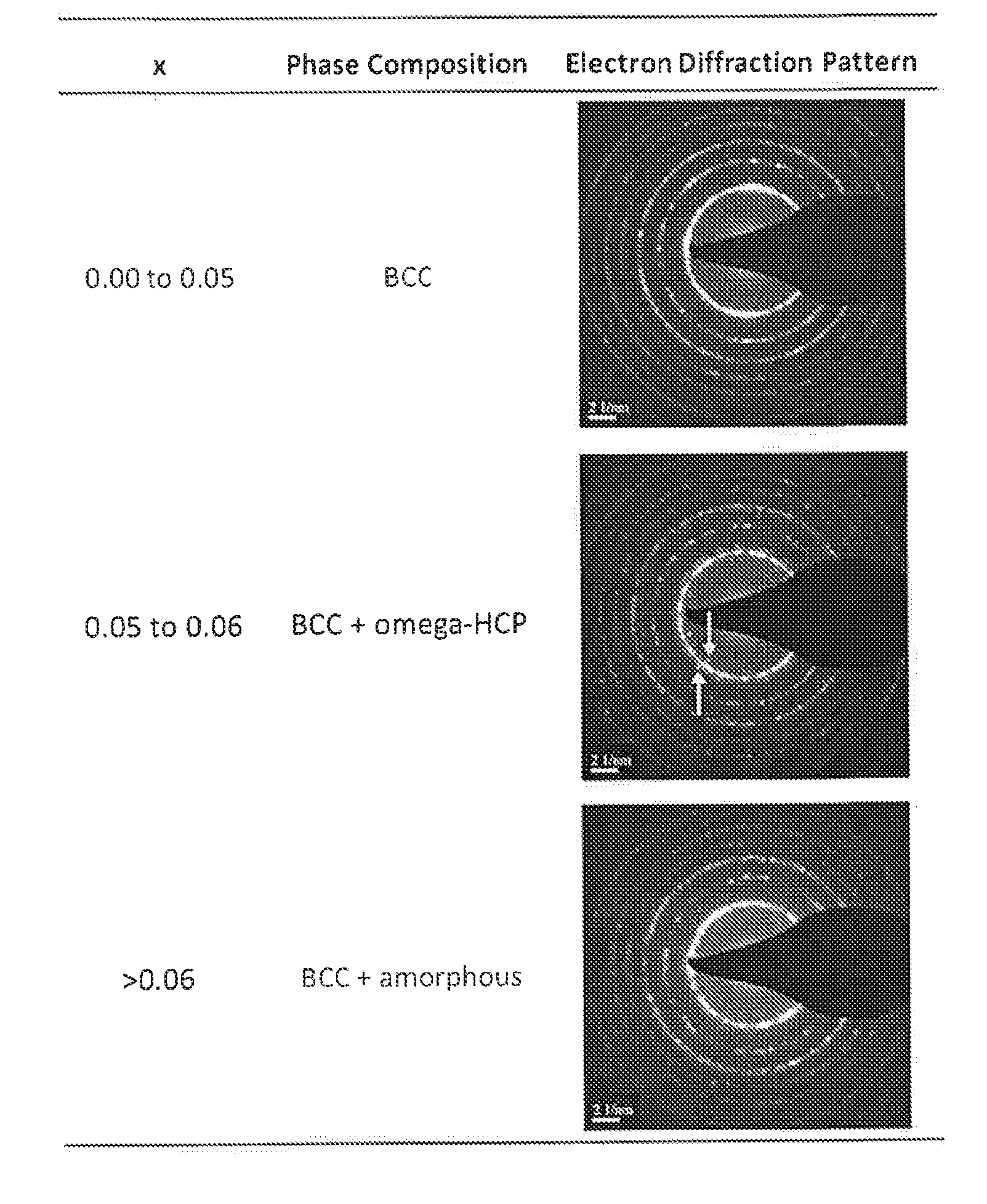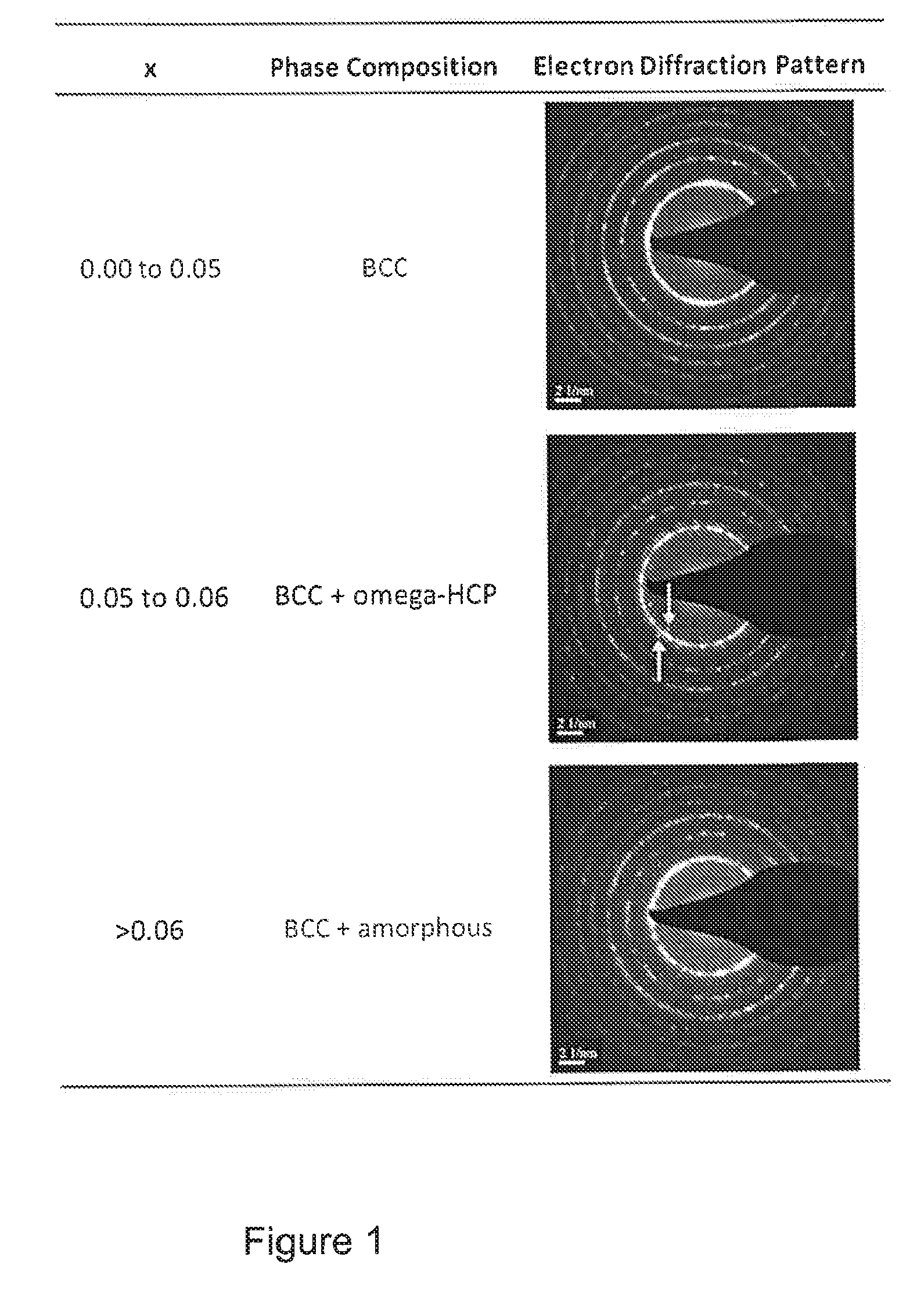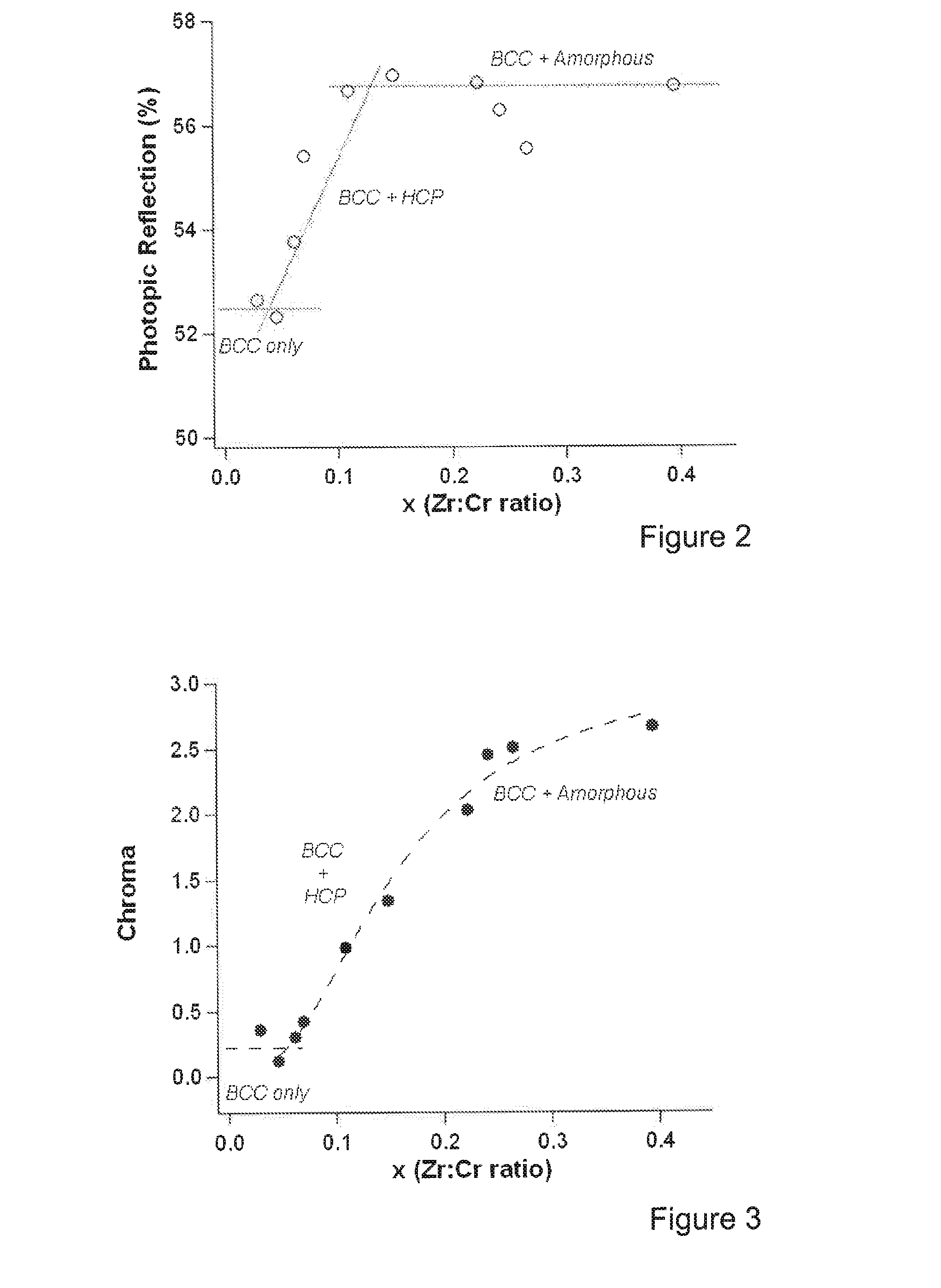Chromium-based reflective coating
a reflective coating and chrome-based technology, applied in the direction of metallic material coating process, signalling/lighting device, climate sustainability, etc., can solve the problems of inappropriate use of high temperature deposition techniques, difficult application of inability to apply appropriate coatings to polymeric materials
- Summary
- Abstract
- Description
- Claims
- Application Information
AI Technical Summary
Benefits of technology
Problems solved by technology
Method used
Image
Examples
examples
Crystal Structure
[0060]The co-sputtering generates thin film coatings of Cr doped with another metal (Zr in the case of most of what is described here, but alternatively also Ti or Co, or less preferably Hf, Ru, Y and Os). As mentioned above, dopant materials such as these modify the structure of the Cr based coating by replacing Cr atoms within the bcc crystal lattice. This modification of the atomic structure of the bcc Cr coating was observed and quantified for the preferred Zr dopant material by measuring the lattice parameter of the crystal structure using electron diffraction. The incorporation of dopant and the resulting change in lattice parameter was observed to correlate with the macroscopic abrasion resistance. Depending on the class of the dopant metal (be it bcc or hcp) at room temperature, it was found that the degree of modification of the bcc Cr crystal lattice could be controlled.
[0061]An understanding of the atomic structure of the preferred binary alloys formed in...
PUM
| Property | Measurement | Unit |
|---|---|---|
| thickness | aaaaa | aaaaa |
| thickness | aaaaa | aaaaa |
| temperature | aaaaa | aaaaa |
Abstract
Description
Claims
Application Information
 Login to View More
Login to View More - R&D
- Intellectual Property
- Life Sciences
- Materials
- Tech Scout
- Unparalleled Data Quality
- Higher Quality Content
- 60% Fewer Hallucinations
Browse by: Latest US Patents, China's latest patents, Technical Efficacy Thesaurus, Application Domain, Technology Topic, Popular Technical Reports.
© 2025 PatSnap. All rights reserved.Legal|Privacy policy|Modern Slavery Act Transparency Statement|Sitemap|About US| Contact US: help@patsnap.com



